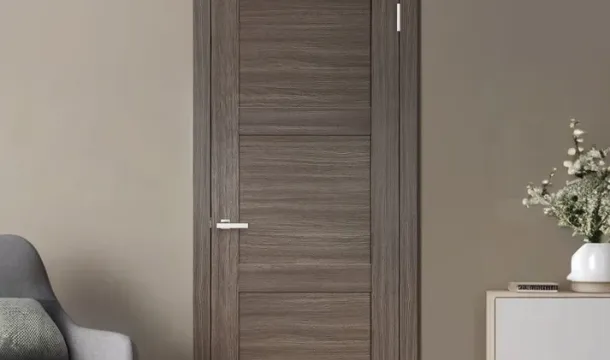A Step-by-Step Guide to Installing Sliding Interior Doors
Popular Articles
Sliding interior doors have become increasingly popular in modern homes due to their space-saving design and stylish appeal. Whether you want to create a sleek divider between rooms or simply add a unique design feature, sliding doors can be a practical and attractive option. Installing sliding interior doors may seem challenging, but with the right tools and steps, you can do it yourself. This comprehensive guide will take you through the entire process of installing sliding interior doors step-by-step, ensuring a smooth installation and a successful result.
1. Gather the Necessary Tools and Materials
Before you start installing your sliding door, it's essential to gather all the necessary tools and materials to ensure a seamless process. Here is a list of what you will need:
-
Sliding door kit (including the door, track, rollers, and any additional hardware)
-
Measuring tape
-
Pencil
-
Level
-
Drill
-
Screwdriver
-
Stud finder
-
Screws
-
Wall anchors (if needed)
-
Safety goggles
Make sure you have everything you need before starting the installation process to avoid interruptions.
2. Measure the Door Opening
The first step in installing sliding interior doors is to measure the opening where the door will be installed. This measurement will determine the size of the door and the length of the track needed.
-
Measure the Width: Measure the width of the opening, including any trim. Sliding doors are typically wider than the opening to ensure full coverage when closed.
-
Measure the Height: Measure the height from the floor to the top of the opening. Make sure to measure in multiple spots, as the floor might not be perfectly level.
-
Check Clearance: Ensure you have enough clearance on either side of the door opening to accommodate the door when it is open. The wall must be free of obstacles such as electrical switches, outlets, or furniture.
3. Attach the Sliding Door Track
Once you have measured the opening and ensured you have the correct size door and track, it's time to attach the sliding door track to the wall.
-
Mark the Position: Use a level and a pencil to mark the position where the track will be mounted above the door opening. The track should be positioned so that there is enough clearance for the door to slide easily without dragging on the floor.
-
Locate Studs: Use a stud finder to locate the studs behind the wall where the track will be mounted. It is crucial to secure the track to studs to ensure stability.
-
Drill Pilot Holes: Drill pilot holes into the studs at the marked positions. If there are no studs where you need to attach the track, use wall anchors to secure it.
-
Install the Track: Secure the track to the wall using screws and a drill. Make sure the track is level and properly aligned with the door opening.
4. Install the Rollers on the Door
The next step is to attach the rollers to the top of the sliding door. The rollers are essential for allowing the door to slide smoothly along the track.
-
Position the Rollers: Position the rollers at the top edge of the door, following the instructions provided with your sliding door kit. Most rollers are adjustable to ensure a perfect fit.
-
Attach the Rollers: Use a drill or screwdriver to attach the rollers to the door. Make sure they are securely fastened to prevent any wobbling or instability.
5. Hang the Door on the Track
With the track installed and the rollers attached to the door, you are now ready to hang the door.
-
Lift the Door: Carefully lift the door and align the rollers with the track. This step may require assistance, as sliding doors can be heavy.
-
Place the Rollers on the Track: Once the rollers are aligned with the track, gently place them onto the track, making sure the door moves smoothly along its length.
-
Adjust the Height: Many sliding door rollers are adjustable, allowing you to fine-tune the height of the door to ensure it clears the floor and fits within the door frame perfectly.
6. Install Door Stops and Guides
To ensure the door stays on track and does not slide too far, you will need to install door stops and guides.
-
Attach Door Stops: Attach door stops to each end of the track to prevent the door from sliding off. Door stops are typically included in the sliding door kit and are easy to screw into place.
-
Install Floor Guide: A floor guide is used to keep the bottom of the door in alignment as it slides along the track. Install the floor guide at the base of the door opening, ensuring it is centered with the door and allows smooth movement.
7. Test the Door
Once everything is installed, it's time to test your sliding door to ensure it works correctly.
-
Slide the Door: Gently slide the door back and forth along the track. It should move smoothly without any wobbling or resistance.
-
Check Alignment: Make sure the door is aligned properly and closes flush with the wall or frame. If the door is not level, adjust the rollers or track as needed.
8. Final Touches
To complete the installation, you may want to add some finishing touches to enhance the appearance and functionality of your sliding door.
-
Install Handles or Pulls: Attach door handles or pulls to make it easier to open and close the door. Handles should be positioned at a comfortable height for use.
-
Add Soft Close Mechanism: If your sliding door kit includes a soft close mechanism, install it to prevent the door from slamming shut. Soft close mechanisms add a touch of luxury and prevent damage to the door and track.
-
Paint or Stain: If your door is unfinished, consider painting or staining it to match the decor of your room. Make sure to use a finish that is durable and suitable for interior use.
Tips for a Successful Installation
-
Use the Right Tools: Using the correct tools, such as a level and stud finder, will make the installation easier and ensure the door is properly aligned.
-
Get Assistance: Sliding doors can be heavy, especially solid wood doors. Enlist the help of a friend or family member to assist with lifting and positioning the door.
-
Measure Twice: Always double-check your measurements before drilling or cutting to avoid mistakes. Accurate measurements are key to a successful installation.
-
Follow Manufacturer Instructions: Every sliding door kit is different, so be sure to read and follow the manufacturer's instructions for the best results.
Installing sliding interior doors is a rewarding project that can enhance both the functionality and style of your home. By following this step-by-step guide, you can successfully install a sliding door that adds a modern, space-saving element to your space. Whether you're installing a sliding door to divide rooms, create privacy, or simply add a stylish touch, proper installation is essential for ensuring smooth operation and a professional finish.
With the right tools, careful measurements, and attention to detail, you can transform your space with beautiful sliding interior doors that will be functional and visually appealing for years to come.
Popular Articles

Soundproofing Interior Doors: Which Options Are Best for Your Home?

Choosing the Perfect Interior Doors for Your Canadian Home
